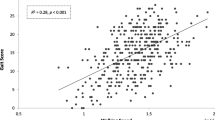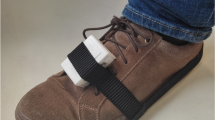Abstract
Fragility is a syndrome characterized by reduced physical and cognitive reserves making the elderly more vulnerable to adverse events, hospitalizations, falls, loss of independence, and death. Inertia sensors have been applied to quantify motion assessment in Timed Up and Go (TUG) test, accelerometers are used during balance assessment, and algorithms differentiate fragile, pre-fragile, and robust elderly people.
Objective: Develo** a multifunctional sensor to evaluate fragility, based on marker phenotype and deficit accumulation index.
Methods: Primary, exploratory, interventional, analytical, and transversal study with a technological approach. The study will be developed, in partnership with researchers from the Federal University of Itajubá-MG using high-tech, multifunctional, and cost-effective sensor equipment in combination with a 3-axis gyroscope, a 3-axis accelerometer, electromyography and frequency meter, analysis of movement quality, energy expenditure, gait velocity, change in balance, heart rate variability during movement, and quality of quadriceps muscle contraction.
The data will be analyzed by software developed after the prototy** of the equipment. The fragility analysis procedure will not cause any damage or impairment to the health of the elderly participants, since the items used during the procedure will be the sensor, the measurement of the instruments, the Barthel Index, the Mental State Examination, and the Self-rated fragility assessment.
The validation of the sensor will not cause damage or impairment to the health of the participants.
Locations: Samuel Libânio Clinical Hospital, in the clinics of Health Clinic, Dementia, and Assistance Nucleus Nursing Education, and in the Basic Health Units of the municipality of Pouso Alegre-MG.
Casuistry: Convenience sample.
Eligibility criteria: 300 elderly people, 60 years of age or older, both sexes, signing the Free and Informed Consent Form (TCLE), and approval by the Research Ethics Committee of University of Vale do Sapucaí (UNIVÁS).
Criteria for non-inclusion: Elderly people with immobility or severe cognitive impairment that impedes understanding of the orientation towards the TUG.
Exclusion criteria: The waiving of continuing the study after the signing of the TCLE.
Access this chapter
Tax calculation will be finalised at checkout
Purchases are for personal use only
Similar content being viewed by others
References
R.C. McDermid, H.T. Stelfox, S.M. Bagshaw, Frailty in the critically ill: a novel concept. Crit. Care 15, 301 (2011)
Y. Schoon, K. Bongers, J. Van Kempen, R. Melis, R.M. Olde, Gait speed as a test for monitoring frailty in community-dwelling older people has the highest diagnostic value compared to step length and chair rise time. Eur. J. Phys. Rehabil. Med. 50(6), 693–701 (2014)
L.P. Fried et al., Frailty in older adults: evidence for a phenotype. J. Gerontol. A Biol. Sci. Med. Sci. 56(3), 146–156 (2001)
M.E. Tinneti et al., A multifactorial intervention to reduce the risk of falling among elderly people living in the community. N. Engl. J. Med. 331(13), 821–827 (1994)
S. Mathias, U.S.L. Nayak, B. Isaacs, Balance in elderly patients: the get up and go test. Arch. Phys. Med. Rehabil. 67, 387–389 (1986)
D. Podsiadlo, S. Richardson, The timed “Up & Go”: a test of basic functional mobility for frail elderly pearsons. J. Am. Geriatr. Soc. 39(2), 142–148 (1991)
G.M. Savva, O.A. Donoghue, F. Horgan, C. O’Regan, H. Cronin, R.A. Kenny, Using timed up-and-go to identify frail members of the older population. J. Gerontol. A Biol. Sci. Med. Sci. 68, 441–446 (2013)
B.R. Greene, E.P. Dohener, A. O’Halloran, R.A. Kenny, Frailty status can be accurately assessed using inertial sensors and the TUG test. Age Ageing 43, 406–411 (2014)
D.L.B. Muniz; M.C. De Andrade. Biomechanical Analysis of the Phases of the March by Accelerometers (2011)
K. Aminian, B. Najafi, C. Bula, P.F. Leyvraz, P. Robert, Spatio-temporal parameters of gait measured by an ambulatory system using miniature gyroscopes. J. Biomech. 35, 689–699 (2002)
B. Najafi, T. Khan, J. Wrobel, Laboratory in a box: wearable sensors and its advantages for gait analysis. Conf. Proc. IEEE Eng. Med. Biol. Soc. 2011, 6507–6510 (2011)
B. Najafi, D. Horn, S. Marclay, R.T. Crews, S. Wu, J.S. Wrobel, Assessing postural control and postural postural control strategy in diabetes patients using innovative and wearabletechnology. J. Diabetes Sci. Technol. 4, 780–791 (2010)
M. Schwenk et al., Wearable sensor-based in-home assessment of gait, balance, and physical activity for discrimination of frailty status: baseline results of the Arizona frailty cohort study. Gerontology 61, 258–267 (2015)
E. Innes, L. Straker, Validity of work-related assessments. Work 13(2), 125–152 (1999)
K.Y. Chen, D.R. Basset Jr., The technology of accelerometry-based activity monitors: current and future. Med. Sci. Sports Exerc. 37(Suppl 11), S490–S500 (2005)
J. Vanhelst, L. Beghin, D. Truck, F. Gotrtrand, New validated thresholds for various intensities of physical activity in adolescents using the Actigraph accelerometer. Int. J. Rehabil. Res. 34(2), 175–177 (2011)
H.A. Bischoff et al., Identifying a cut-off point for normal mobility: A comparison of the timed ‘up and go’ test in community-dwelling and institutionalised elderly women. Age Ageing 32(3), 315–320 (2003)
F.I. Mahoney, D. Barthel, Functional evaluation: the Barthel index. Md. State Med. J. 14, 56–61 (1965)
M.F. Folstein, S.E. Folstein, P.R. McHugh, Mini-Mental State. J. Psychiatr. Res. 12, 189–198 (1985)
D.P. Nunes, Y.A.O. Duarte, J.L.F. Santos, M.L. Lebrão, Screening for frailty in older adults using a self-reported instrument. Rev. Saúde Pública 49, 2 (2015)
J.L. Fleg et al., Accelerated longitudinal decline of aerobic capacity in healthy older adults. Circulation 112(5), 674–682 (2005)
Author information
Authors and Affiliations
Corresponding authors
Editor information
Editors and Affiliations
Rights and permissions
Copyright information
© 2018 Springer International Publishing AG, part of Springer Nature
About this paper
Cite this paper
Mello, J.L.C., Souza, D.M.T., Tamaki, C.M., Galhardo, V.A.C., Veiga, D.F., Ramos, A.C.B. (2018). Application of an Effective Methodology forAnalysis of Fragility and Its Components inthe Elderly. In: Latifi, S. (eds) Information Technology - New Generations. Advances in Intelligent Systems and Computing, vol 738. Springer, Cham. https://doi.org/10.1007/978-3-319-77028-4_95
Download citation
DOI: https://doi.org/10.1007/978-3-319-77028-4_95
Published:
Publisher Name: Springer, Cham
Print ISBN: 978-3-319-77027-7
Online ISBN: 978-3-319-77028-4
eBook Packages: EngineeringEngineering (R0)




